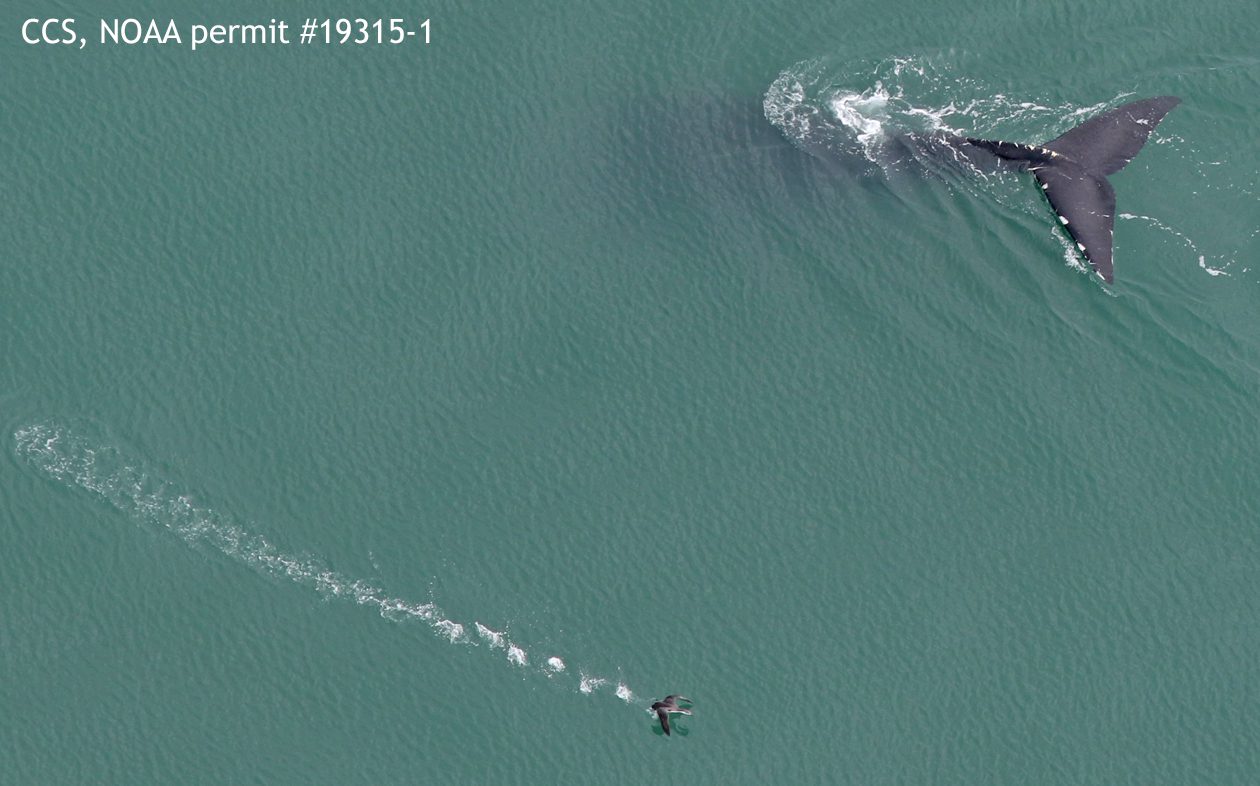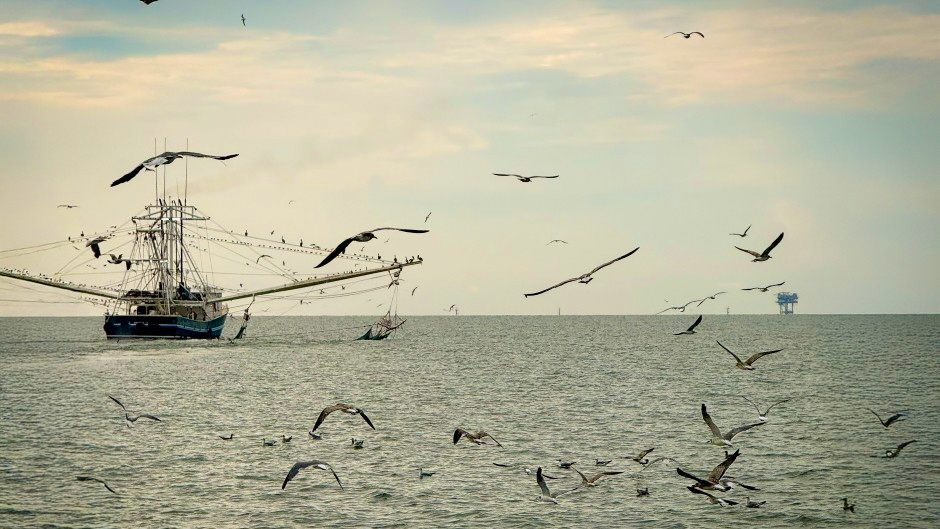1,000 Marine Mammals Spotted Off Nantucket During Aerial Survey – Nantucket Current

Aerial Survey Report: Biodiversity and Sustainable Development in the Northeast Canyons and Seamounts Marine National Monument
Executive Summary
An aerial survey conducted on July 24 by the New England Aquarium’s Anderson Cabot Center for Ocean Life has provided critical data affirming the ecological significance of the Northeast Canyons and Seamounts Marine National Monument. The findings, which include the observation of over 1,000 marine animals and several endangered species, directly underscore the monument’s vital role in advancing the United Nations Sustainable Development Goal 14 (SDG 14): Life Below Water. This report details the survey’s findings and analyzes their implications for marine conservation and global sustainability targets.
Survey Findings and Species Inventory
The survey documented a significant concentration of marine life, highlighting the monument as a critical habitat. The observation of an endangered fin whale with its calf is a particularly noteworthy event, reinforcing the area’s importance as a sanctuary for vulnerable populations.
Total Sightings on July 24:
- Endangered Species:
- Fin Whales: 7 (including one calf)
- Sperm Whale: 1
- Other Cetaceans:
- Humpback Whale: 1
- Minke Whales: 2
- Common Dolphins: 781
- Risso’s Dolphins: 108
- Pilot Whales: 55
- Bottlenose Dolphins: 30
- Striped Dolphins: 20
- Other Marine Life:
- Devil Rays: 22
Alignment with Sustainable Development Goals (SDGs)
The survey results provide compelling evidence of the monument’s success in contributing to several SDGs, with a primary emphasis on SDG 14.
SDG 14: Life Below Water
The monument is a direct implementation of key targets within SDG 14, which aims to conserve and sustainably use the oceans, seas, and marine resources.
- Target 14.5: By 2020, conserve at least 10 percent of coastal and marine areas. The establishment of the 5,000-square-mile monument in 2016 is a direct contribution to this global conservation target.
- Target 14.2: Sustainably manage and protect marine and coastal ecosystems. The rich biodiversity observed during the survey demonstrates that the monument functions as a protected, ecologically productive hotspot. The upwelling process created by its deep-sea canyons and seamounts sustains a vast array of species, showcasing a healthy and resilient ecosystem.
- Protecting Threatened Species: The presence of endangered fin and sperm whales confirms the monument’s role as an essential refuge. Protecting these species is fundamental to halting biodiversity loss and achieving the broader goals of SDG 14 and SDG 15 (Life on Land).
As noted by Assistant Research Scientist Kate Laemmle, “Each survey speaks to the remarkable array of biodiversity that we see in the Monument… it reinforces why it is so essential to the health of our ocean and planet to protect these unique habitats and the endangered species that depend on them.” This perspective directly aligns with the conservation mandate of SDG 14.
Conclusion: The Monument as a Model for Sustainable Ocean Management
The July 24 aerial survey reaffirms the Northeast Canyons and Seamounts Marine National Monument as a global exemplar of effective marine conservation. Its status as a protected biodiversity hotspot is crucial for the survival of endangered species and the overall health of the Atlantic Ocean. Continued monitoring and protection of this area are not merely local conservation efforts but are integral actions that contribute directly to achieving the ambitious targets of Sustainable Development Goal 14 and securing a healthy planet for future generations.
SDGs Addressed in the Article
SDG 14: Life Below Water
- This goal is central to the article, which focuses on the Northeast Canyons and Seamounts Marine National Monument, a protected marine area. The text emphasizes the importance of protecting marine habitats and the species within them. The article states, “it is so essential to the health of our ocean and planet to protect these unique habitats.” This directly aligns with SDG 14’s objective to conserve and sustainably use the oceans, seas, and marine resources.
SDG 15: Life on Land
- Although the context is marine, SDG 15 is relevant because of its focus on protecting biodiversity and threatened species. The article highlights the sighting of several endangered species, including the “endangered fin whale and its calf” and an “endangered sperm whale.” The goal to “protect and prevent the extinction of threatened species” is a key component of SDG 15, and the article’s narrative about protecting these animals and their habitat connects directly to this goal.
Specific Targets Identified
Targets under SDG 14: Life Below Water
-
Target 14.2: By 2020, sustainably manage and protect marine and coastal ecosystems to avoid significant adverse impacts, including by strengthening their resilience, and take action for their restoration in order to achieve healthy and productive oceans.
- The article describes the monument as a “protected habitat” and a “hotspot of biodiversity.” The creation of the 5,000-square-mile monument in 2016 is a direct action to protect a marine ecosystem. The description of the area’s ecological productivity, resulting from upwelling, reinforces the importance of its protection for a “healthy and productive” ocean.
-
Target 14.5: By 2020, conserve at least 10 per cent of coastal and marine areas, consistent with national and international law and based on the best available scientific information.
- The article explicitly discusses the “Northeast Canyons and Seamounts Marine National Monument,” which is a designated marine protected area. Its creation and the ongoing scientific monitoring (“aerial survey”) are direct contributions to this target. The article specifies its size (“5,000-square-mile”) and location (“100 miles southeast of Nantucket”), confirming it as a conserved marine area.
Targets under SDG 15: Life on Land
-
Target 15.5: Take urgent and significant action to reduce the degradation of natural habitats, halt the loss of biodiversity and, by 2020, protect and prevent the extinction of threatened species.
- The article’s core message revolves around the protection of endangered species. It lists specific sightings of “endangered fin whales” and an “endangered sperm whale.” The scientist’s quote reinforces this: “it reinforces why it is so essential… to protect these unique habitats and the endangered species that depend on them.” This directly reflects the urgency and action required by Target 15.5.
Indicators Mentioned or Implied
Indicators for SDG 14 Targets
- For Target 14.5: The primary indicator is the coverage of protected marine areas (Indicator 14.5.1). The article provides a direct measure for this by stating the monument is a “5,000-square-mile” protected area.
- For Target 14.2: While a quantitative indicator for ecosystem health is not provided, the article implies a qualitative one. The “remarkable array of biodiversity” and the specific counts of various species (e.g., “781 common dolphins,” “22 devil rays”) serve as an implied indicator of the ecosystem’s health and productivity. The survey itself is a method for gathering data to assess this.
Indicators for SDG 15 Targets
- For Target 15.5: The article implies the use of species population counts as an indicator. The specific numbers from the survey (“seven endangered fin whales, one endangered sperm whale”) are data points used to monitor the status of threatened species. This data contributes to broader indicators like the Red List Index (Indicator 15.5.1), which tracks the extinction risk of species. The mention of a “fin whale and its calf” is a positive sign of population viability.
Summary of Findings
| SDGs | Targets | Indicators |
|---|---|---|
| SDG 14: Life Below Water |
14.2: Protect and restore marine and coastal ecosystems.
14.5: Conserve at least 10% of coastal and marine areas. |
Implied: Species counts and diversity as a measure of ecosystem health (e.g., “781 common dolphins,” “108 Risso’s dolphins”).
Direct: Coverage of protected areas (Indicator 14.5.1), specified as the “5,000-square-mile Monument.” |
| SDG 15: Life on Land | 15.5: Protect threatened species and halt biodiversity loss. | Implied: Population counts of endangered species (e.g., “seven endangered fin whales,” “one endangered sperm whale”) which contribute to monitoring extinction risk (related to Indicator 15.5.1: Red List Index). |
Source: nantucketcurrent.com

What is Your Reaction?
 Like
0
Like
0
 Dislike
0
Dislike
0
 Love
0
Love
0
 Funny
0
Funny
0
 Angry
0
Angry
0
 Sad
0
Sad
0
 Wow
0
Wow
0










































































